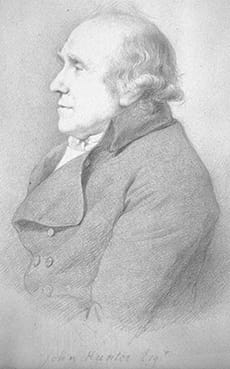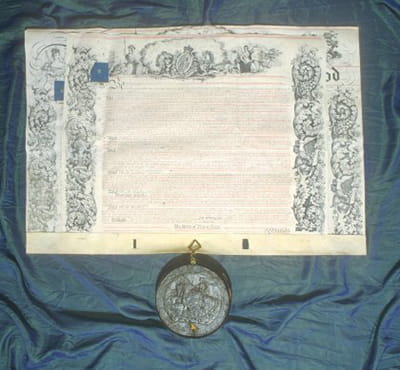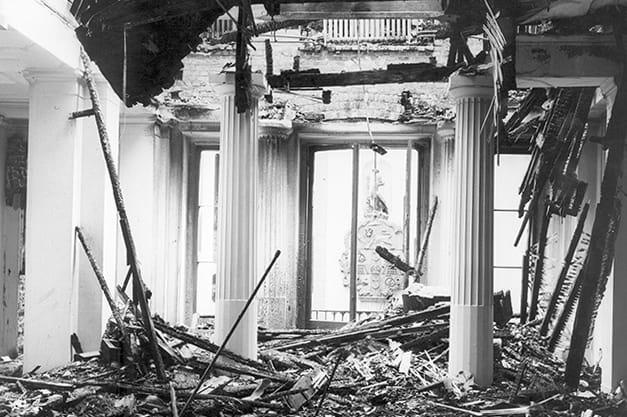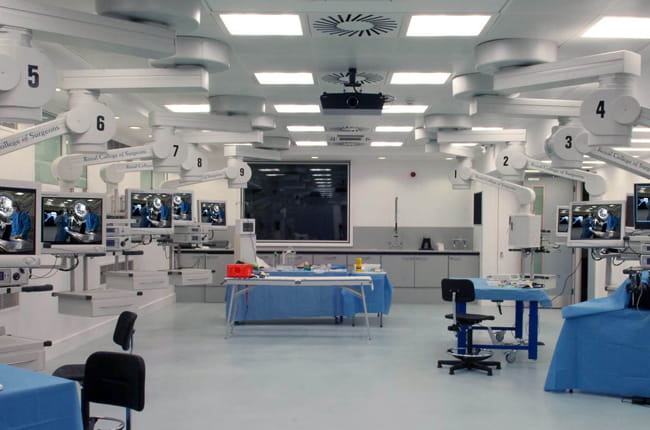History of the RCS
The Company of Barber-Surgeons, established in 1540, was a trade guild and a London Livery Company that apprenticed and examined trainees within the City of London. Initially the Barbers were the senior members, but in time the surgeons became more respected and sought to establish their own identity.
The 18th century
 In 1745, the Barber-Surgeons were split by an Act of Parliament into two bodies at the request of the surgeons. The new Corporation (Company) of Surgeons built a new hall with an anatomy theatre near Newgate Gaol so it could teach and dissect the bodies of executed criminals.
In 1745, the Barber-Surgeons were split by an Act of Parliament into two bodies at the request of the surgeons. The new Corporation (Company) of Surgeons built a new hall with an anatomy theatre near Newgate Gaol so it could teach and dissect the bodies of executed criminals.
In 1796, the Surgeons bought properties in Lincoln’s Inn fields and applied for a new constitution that would modernise its organisation. At the same time, the government bought the museum of the late surgeon and scientist John Hunter (1728-1793) and gave custody of it to the Company of Surgeons on condition that they opened the museum to medics and students.
The Charters of 1800 and 1843
In 1800, ‘The Royal College of Surgeons in London’ was born on presentation of a new Royal Charter. The new building at Lincoln’s Inn Fields went up and the Hunterian Museum opened in its new home in 1813. The Museum was a key part of the College and steadily increased in size and importance.
 In 1843, a new Royal Charter changed the name to ‘The Royal College of Surgeons of England’, and expanded the remit outside the city of London. The Charter also created a higher qualification, the Fellowship of the College (FRCS). As new developments in areas such as anaesthesia and antiseptics expanded surgical possibilities, the College exams became more rigorous. Specialist subjects were introduced, and from the 1880s the exams were held jointly with the Royal College of Physicians, resulting in the conjoint qualification ‘MRCS LRCP’.
In 1843, a new Royal Charter changed the name to ‘The Royal College of Surgeons of England’, and expanded the remit outside the city of London. The Charter also created a higher qualification, the Fellowship of the College (FRCS). As new developments in areas such as anaesthesia and antiseptics expanded surgical possibilities, the College exams became more rigorous. Specialist subjects were introduced, and from the 1880s the exams were held jointly with the Royal College of Physicians, resulting in the conjoint qualification ‘MRCS LRCP’.
The twentieth century
In 1906 women were allowed to sit the College exams for the first time. Dossibai Patel from Bombay became the first female Member in 1910 and Eleanor Davies-Colley became the first female Fellow in 1911.
The twentieth century saw the College’s advisory role gradually increase. More specialties emerged and became faculties, such as the Faculty of Dental Surgery founded in 1947, with their own diplomas and fellowships.
 During the Second World War the College was hit by incendiary devices, causing massive damage to the building and destroying about a third of the museum specimens. The post-war rebuilding of the College provided the opportunity to rethink its role, and to expand the teaching and research it provided.
During the Second World War the College was hit by incendiary devices, causing massive damage to the building and destroying about a third of the museum specimens. The post-war rebuilding of the College provided the opportunity to rethink its role, and to expand the teaching and research it provided.
By the 1990s things had moved on again. The College was renovated and the Raven Department of Education was opened to provide training facilities.
The twenty-first century
 In 2010 The Royal College of Surgeons opened the doors to its new state-of-the-art clinical skills unit, known as the Eagle Project (named after the College emblem). The three-phased project transformed the College's education facilities into a national centre of excellence for surgical education, training and assessment, and provides the UK with one of the most advanced surgical teaching facilities in the world.
In 2010 The Royal College of Surgeons opened the doors to its new state-of-the-art clinical skills unit, known as the Eagle Project (named after the College emblem). The three-phased project transformed the College's education facilities into a national centre of excellence for surgical education, training and assessment, and provides the UK with one of the most advanced surgical teaching facilities in the world.
The College continues its important roles of training, supporting and examining surgeons, auditing clinical effectiveness, and advising the department of health and other bodies.
Transforming surgery for tomorrow
Our two existing buildings in Lincoln's Inn Fields were almost completely rebuilt in the 1950s following extensive bomb damage in World War II. They are, however, uneconomical, inflexible, expensive to run and refurbish and have become an obstacle to future progress.
In 2017 we began work on our plans to transform our London base into a modern, light and flexible facility to provide the best possible education, examination and research facilities for the profession while embracing our prestigious heritage. The College reopened its London headquarters in July 2021, the Lincoln's Inn Fields building transformed to a state-of-the-art training centre for future surgeons and dental professionals.
